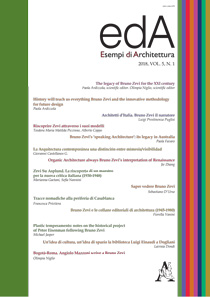Estratto da
ESEMPI DI ARCHITETTURA
International Journal of Architecture and Engineering
Tracce nomadiche alla periferia di Casablanca. Nomadic traces in the Casablanca outskirts
ESEMPI DI ARCHITETTURA
International Journal of Architecture and Engineering
Tracce nomadiche alla periferia di Casablanca. Nomadic traces in the Casablanca outskirts

In order to understand the theoretical, spatial, and compositional foundations of Jean François Zevaco's Anfa home-studio in Casablanca (1975), we can draw on Bruno Zevi's concept of the "zero degree" in architectural writing. In prehistoric works, such as nomadic tents and villages, Zevi saw the persistence of a mode of expression — the "zero degree" — that was alternative to the rules and conventions that had limited architecture's expressive freedom from the Neolithic age to the present day (Zevi, 1994). Focusing a "zero degree" critical perspective on the Anfa house-studio reveals the genius of Zevaco's project. Zevaco uses the syntax and grammar of the "zero degree" of prehistoric writing to return the building type of the traditional Moroccan house to the freedom of the nomadic origins of Saharan dwellings. The "zero degree" of Zevaco's house reflects the freedom of cultural expression regained after almost fifty years as a French protectorate. Zevaco's theoretical and design trajectory, tied to the "zero degree" concept, can still serve as a fertile ground for a contemporary architectural writing alternative to habits, dogmas, and superimposed rules, and it can preserve from prehistory the freedom of expression for architecture, and, most importantly, the individual.
| pagine: | 81-88 |
| DOI: | 10.4399/97888255150539 |
| data pubblicazione: | Maggio 2018 |
| editore: | Aracne |








